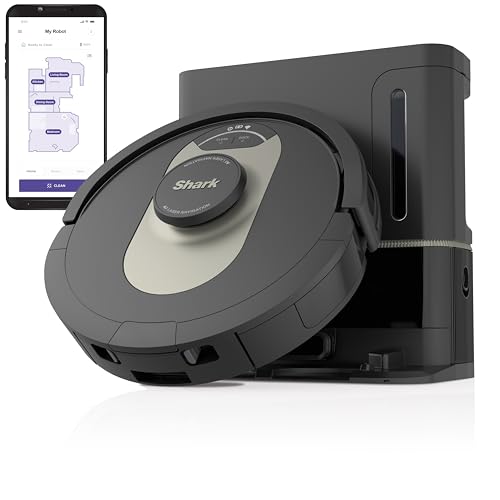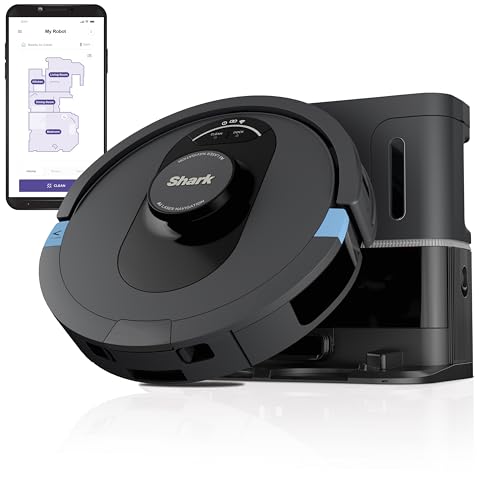See What Bagless Automated Sweepers Tricks The Celebs Are Using
페이지 정보

본문
Bagless Automated Sweepers
There's a brand new generation of robot vacuums that don't use any bags. Bagless models come with plastic dirt compartments which hold debris and are emptied directly into a bin at the base station. They typically have no or minimal annual costs, with the exception of changing filters, which are washable.
Our top pick has 5,300Pa of suction power, and self-emptying into an unbagged base station that can hold about one month's worth. It also comes with an intelligent mopping mode.
Easy to empty
In contrast to vacuum cleaners that utilize bags, bagless sweepers come with dirt bins that are simple to clean and empty. It's as easy as opening the trash bin and then throwing away the contents. The lack of a bag to cut open or lose means it's an easier process as compared to switching bags on bags on a bagged model.
Many bagless robot vacuum and mop robots come with self-emptying bases that reduce the need for manual maintenance. They are able to last for months without having to be emptied and for models that mop, the base can be able to hold multiple cleaning sessions of water. However, it's important to ensure that the dock or Self-Empty Base is placed in an area where it will not block your robot's view or its sensors, and it's best bagless robot vacuum for pet hair to use it only for dry sweeps.
Receptacles used by bagless robots are generally made of clear plastic which lets you see how much dirt and other objects the machine has collected as you empty it. This is a great way to keep in mind the amount of dirt and debris that was gathered by the robot.
Another benefit of the clear plastic receptacles is that they can easily locate any lost items such as that jack of Jimmy's or Little Mary's doll barrette that might have been sucked into the vacuum and never been seen again. There's nothing more frustrating than a missing toy, therefore having a bin that is visible can help you find it and avoid the trouble of searching through the mess of a bag for a long time.
The bins that are used by bagless robotic sweepers are less difficult to empty than vacuums that have bags. However, they need to be cleaned and washed regularly. These are not difficult to do and can be done by any homeowner. Bagless vacuums also come with filters that must be cleaned or replaced according to the model. However, they are a minor cost that is significantly less than the cost of bags that are replaced for a bagged model.
Better clean
If the bags are full, many bagged sweepers stop working at their maximum power. This results in a poorer than average cleaning performance. Bagless systems, on other hand, continue to perform well even when they are near capacity. This results in more consistent, high-quality clean over the entire sweep.
In addition, most bagless self-cleaning robots models come with a larger debris bin than bagged counterparts. This means they are able to pick up more large objects--like wood shavings and screws made of metal--than the smaller bins that are found on bagged models. This is especially useful when cleaning stairs and corners where dirt can accumulate.
Additionally, since bagless self-emptying robot vacuum vacuum cleaners don't use disposable bags, they're an environmentally friendly option. Contrary to vacuum cleaners with bags need hundreds of bags over their lifetime, placing an environmental burden.
Easy to maintain
 Bagless sweepers come with a canister built in to collect dirt and other debris. Vacuum bags aren't required. This makes bagless sweepers more eco-friendly choice than their bagged counterparts. Bagged vacuum cleaners can utilize hundreds of bags to dispose of their lifespan, which adds to a significant amount of waste. Bagless models on the other hand just require a single upfront investment in the machine itself. This reduces long-term spending and the environmental impact.
Bagless sweepers come with a canister built in to collect dirt and other debris. Vacuum bags aren't required. This makes bagless sweepers more eco-friendly choice than their bagged counterparts. Bagged vacuum cleaners can utilize hundreds of bags to dispose of their lifespan, which adds to a significant amount of waste. Bagless models on the other hand just require a single upfront investment in the machine itself. This reduces long-term spending and the environmental impact.
There's a brand new generation of robot vacuums that don't use any bags. Bagless models come with plastic dirt compartments which hold debris and are emptied directly into a bin at the base station. They typically have no or minimal annual costs, with the exception of changing filters, which are washable.
Our top pick has 5,300Pa of suction power, and self-emptying into an unbagged base station that can hold about one month's worth. It also comes with an intelligent mopping mode.
Easy to empty
In contrast to vacuum cleaners that utilize bags, bagless sweepers come with dirt bins that are simple to clean and empty. It's as easy as opening the trash bin and then throwing away the contents. The lack of a bag to cut open or lose means it's an easier process as compared to switching bags on bags on a bagged model.
Many bagless robot vacuum and mop robots come with self-emptying bases that reduce the need for manual maintenance. They are able to last for months without having to be emptied and for models that mop, the base can be able to hold multiple cleaning sessions of water. However, it's important to ensure that the dock or Self-Empty Base is placed in an area where it will not block your robot's view or its sensors, and it's best bagless robot vacuum for pet hair to use it only for dry sweeps.
Receptacles used by bagless robots are generally made of clear plastic which lets you see how much dirt and other objects the machine has collected as you empty it. This is a great way to keep in mind the amount of dirt and debris that was gathered by the robot.
Another benefit of the clear plastic receptacles is that they can easily locate any lost items such as that jack of Jimmy's or Little Mary's doll barrette that might have been sucked into the vacuum and never been seen again. There's nothing more frustrating than a missing toy, therefore having a bin that is visible can help you find it and avoid the trouble of searching through the mess of a bag for a long time.
The bins that are used by bagless robotic sweepers are less difficult to empty than vacuums that have bags. However, they need to be cleaned and washed regularly. These are not difficult to do and can be done by any homeowner. Bagless vacuums also come with filters that must be cleaned or replaced according to the model. However, they are a minor cost that is significantly less than the cost of bags that are replaced for a bagged model.
Better clean
If the bags are full, many bagged sweepers stop working at their maximum power. This results in a poorer than average cleaning performance. Bagless systems, on other hand, continue to perform well even when they are near capacity. This results in more consistent, high-quality clean over the entire sweep.
In addition, most bagless self-cleaning robots models come with a larger debris bin than bagged counterparts. This means they are able to pick up more large objects--like wood shavings and screws made of metal--than the smaller bins that are found on bagged models. This is especially useful when cleaning stairs and corners where dirt can accumulate.
Additionally, since bagless self-emptying robot vacuum vacuum cleaners don't use disposable bags, they're an environmentally friendly option. Contrary to vacuum cleaners with bags need hundreds of bags over their lifetime, placing an environmental burden.
Easy to maintain
 Bagless sweepers come with a canister built in to collect dirt and other debris. Vacuum bags aren't required. This makes bagless sweepers more eco-friendly choice than their bagged counterparts. Bagged vacuum cleaners can utilize hundreds of bags to dispose of their lifespan, which adds to a significant amount of waste. Bagless models on the other hand just require a single upfront investment in the machine itself. This reduces long-term spending and the environmental impact.
Bagless sweepers come with a canister built in to collect dirt and other debris. Vacuum bags aren't required. This makes bagless sweepers more eco-friendly choice than their bagged counterparts. Bagged vacuum cleaners can utilize hundreds of bags to dispose of their lifespan, which adds to a significant amount of waste. Bagless models on the other hand just require a single upfront investment in the machine itself. This reduces long-term spending and the environmental impact.
- 이전글How To Identify The Single Wooden Bunk Beds That's Right For You 24.09.06
- 다음글How Getting An ADHD Diagnosis Has Changed My Life The Better 24.09.06
댓글목록
등록된 댓글이 없습니다.
